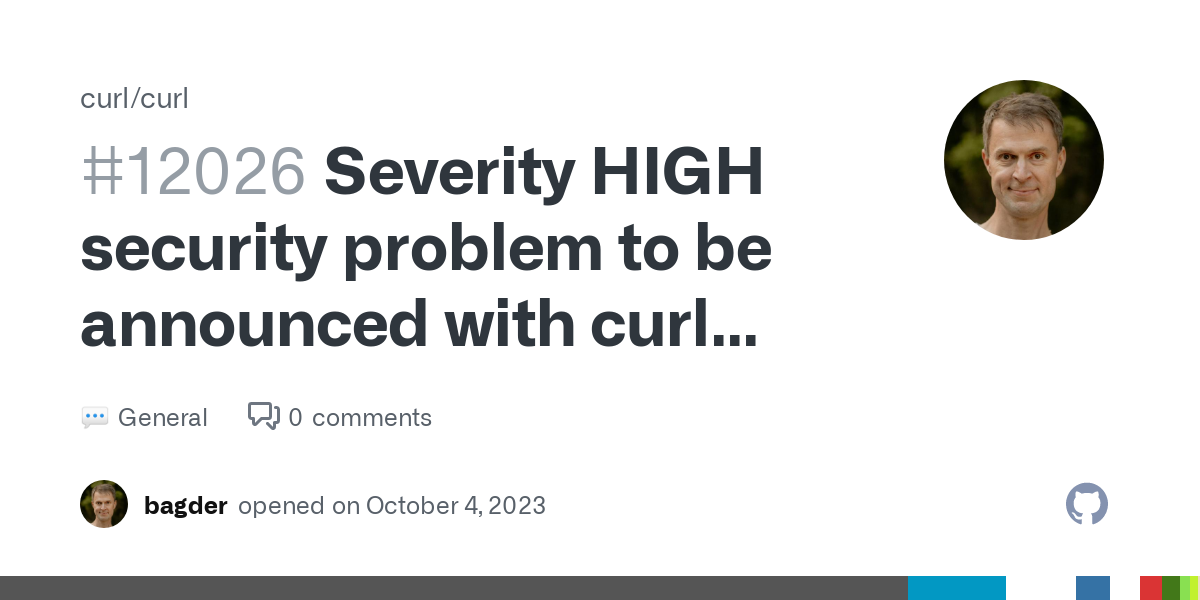cross-posted from: https://biglemmowski.win/post/224873
Posted on twitter by Curl author Daniel Stenberg - https://nitter.cz/bagder/status/1709103920914526525
We are cutting the release cycle short and will release curl 8.4.0 on October 11, including a fix for a severity HIGH CVE. Buckle up.
… But this time actually the worst security problem found in curl in a long time
https://cve.mitre.org/cgi-bin/cvename.cgi?name=CVE-2023-38545



Didn’t Daniel Stenberg just go on a bitchfit a month ago about how CVE is bad and useless and wasting his time?
Reading the blog post, it’s a lot more nuanced than that: someone reported a CVE, which was related to a possible int overflow in client code handling the timeout between requests. NVD chose to grade this as a 9.8/10 on their severity scale (for context, CVE-2014-0160, also known as Heartbleed, got a 7.5/10), which is ludicrous for a bug which could at most change the retry timeout of your request from your intended years to a few seconds. Daniel says that this is not a security vulnerability at all and has no business being listed on the CVE database, whereas NVD argues that it’s a bug, it’s been reported to them and because overflows are undefined behavior, anything can happen and so it’s a security vulnerability.
In the end, they agreed to at least adjust the severity down to a 3.3, but I can understand that Daniel is still somewhat miffed about it. Personally I also agree that it’s not really a security issue and that even a 3.3 is too high in terms of severity.
Are we reading the same article? I read it when it came out, and read it a second time now. The article:
The article is about missing checks in the CVE ecosystem that allows useless fearmongering perpetrated by badly filed CVEs to spread, citing one particular CVE as exemplary of all the faults
You assume they’ve read the article 😬
I’m not sure, but I think they’re able to review their own CVEs now, or at least they were trying to be able to after 2020-19909. Because companies like Microsoft, Intel, and stuff already do. (I believe the term is CNA)